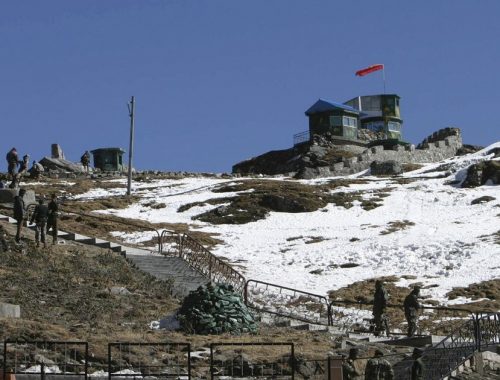Days ahead of United Nations Climate Change Conference (COP 25) at Madrid, a United Nations Environment Programme report has said with the current pledges to reduce carbon emissions there is a 66% chance that warming will be limited to 3.2 degree C by the end of this century.
This would mean displacement, destruction owing to catastrophic climate change impacts in the coming decades across the world.
The 2015 Paris Agreement has a goal of keeping global temperature rise well below 2 degrees Celsius above pre-industrial levels and to pursue efforts to limit temperature increase to 1.5 degrees Celsius.
The Emissions Gap Report 2019 released on Tuesday said a “dramatic” strengthening of the nationally determined contributions (NDCs) is needed in 2020 to prevent dangerous climate change impacts. Countries will have to increase their NDC ambitions threefold to achieve the well below 2 degree C goal and more than five-fold to achieve the 1.5 degree C goal.
Greenhouse gas (GHG) emissions have risen at a rate of 1.5% per year in the last decade. There is no sign of GHG emissions peaking in the next few years after which they can start declining rapidly, the report said indicating a large gap in current emissions and action needed to avert climate change crisis.
By 2030, emissions would need to be 25% and 55% lower than in 2018 to put the world on a pathway to meet the 2 degree C target.
The G20 countries account for 78% of all emissions, but 7 of them do not have policies yet to achieve their current NDCs. On the progress of G20 economies, India along with China, the EU, Mexico, Russia and Turkey are on track to meet their goals, the report highlighted. Among them, India, Russia and Turkey are projected to over-achieve their NDC emission targets.
“These results suggest that the three countries have room to raise their NDC ambition significantly. The EU has introduced climate legislation that achieves at least a 40% reduction in GHG emissions, which the European Commission projects could be overachieved if domestic legislation is fully implemented in member states,” the report said.
The delay in arriving at a global consensus to limit global temperature rise to 2 degree C has led to a situation where countries will need to make large cuts in CO2 emissions immediately.
The report projects that had climate action begun in 2010, the cuts required per year to meet the projected emissions levels for 2 degree C and 1.5 degree C would only have been 0.7% and 3.3% per year on average.
Due to the delay in making an agreement the required cuts in emissions are now 2.7% per year from 2020 for the 2 degree C goal and about 7.6% per year on average for the 1.5 degree C goal.
The World Meteorological Organisation on Monday said greenhouse gas concentrations in the atmosphere had reached a record high in 2018.
The globally averaged concentrations of carbon dioxide (CO2) reached 407.8 parts per million in 2018, up from 405.5 parts per million (ppm) in 2017.
by Jayashree Nandi




